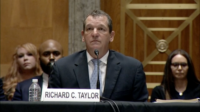Housing promoters are collaborating on green communities, green affordable housing and prefabricated green houses.
 LivingHomes Prefabricated and green: Ray Kappe's designs for Living Homes. |
The Feb. 7 launch of the U.S. Green Building Council’s pilot program for its LEED for Neighborhood Development to Promote Smart Growth and Community Development (LEED ND) rating system is the latest of several related developments concerning green communities and houses. Last month, LivingHomes, Santa Monica, Calif., celebrated the first certification of a LEED Platinum home in the U.S. and became the first home developer-builder to offer prefabricated LEED-certified homes and a LEED-certified site-built model home. In November, Enterprise Community Partners, Columbia, Md.; the Natural Resources Defense Council; and the Washington, D.C.-based USGBC joined to expand the benefits of green building for developers, operators and residents of affordable housing.
Perhaps the most significant aspect of all of this are the partnerships formed by the major players. NRDC and CNU sponsored the LEED ND program, currently accepting applications for pilot projects. Enterprise worked in partnership with NRDC to create criteria for its Green Communities initiative. LivingHomes is also a member. And LivingHomes relied on USGBC, Green Communities and Enterprise to develop its custom home and its prefabricated line of homes.
“Two years ago, we referred to the working document from the LEED ND committee as we explored the possibilities of smarter site location, site improvements and other items that overlap with LEED ND, says Dana Bourland, a spokesperson for Enterprise.
Enterprise is also providing financial support to several developments through Green Communities to engage in more sustainable site development work at a neighborhood scale. “We expect at least two or three of the currently funded Green Communities developments to apply to be part of the pilot program,” says Bourland.
Enterprise also advised the LEED ND committee on the credits within the rating system related to affordable housing. “We are pleased the USGBC is integrating affordable housing into its rating systems and working to make sure low-income families benefit from green housing in greener communities,” says Bourland. “We are seeing tremendous interest from developers to engage in thinking differently about the design, location and construction of affordable housing.
In the two years since the launch of Green Communities, Enterprise reports it has invested $350 million into 150 developments, totaling over 7,000 green affordable homes.
The development of the LEED ND pilot program has been three years in the making. “The times when the platinum green award would go to building out in the corn field somewhere was troublesome to the smart growth and the new urbanism movements,” says John Norquist, president of the CNU, Chicago. “Do a building [in isolation] for energy savings and then it costs a lot of energy to get there.
“The idea wasn’t to prohibit building in sprawl, it was to add another measurement to the equation,” he says.
Norquist maintains that LEED certification for new buildings in existing neighborhoods will be easier with LEED ND. “It would sound like it would make it more complicated, but it will actually make it simpler because it is based on the basic techniques of community that have worked for thousands of years,” he says.
For example, as it stands, a developer would get more points for building infill in a city than for a new subdivision.
On the single home scale, LivingHomes offers two models of prefabricated homes, designed by Ray Kappe to be built in volume with minimal customization. The designs cost approximately $250 per sq ft, excluding transportation, foundation and installation.
Another model home, designed by David Hertz Architects, Santa Monica, will form the basis for a full line of similar, easily reproducible site-built homes, says LivingHomes. Sizes range from 2,200 sq ft to 2,600 sq ft. The Hertz homes cost about $215 per sq ft, excluding foundation, transportation and installation.
The pilot program of LEED ND will last about a year. Then, USGBC will revise the rating system, based on feedback from the pilots, prior to a LEED ND ballot by USGBC membership.


Post a comment to this article
Report Abusive Comment